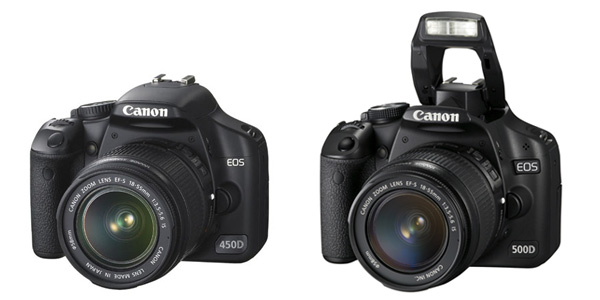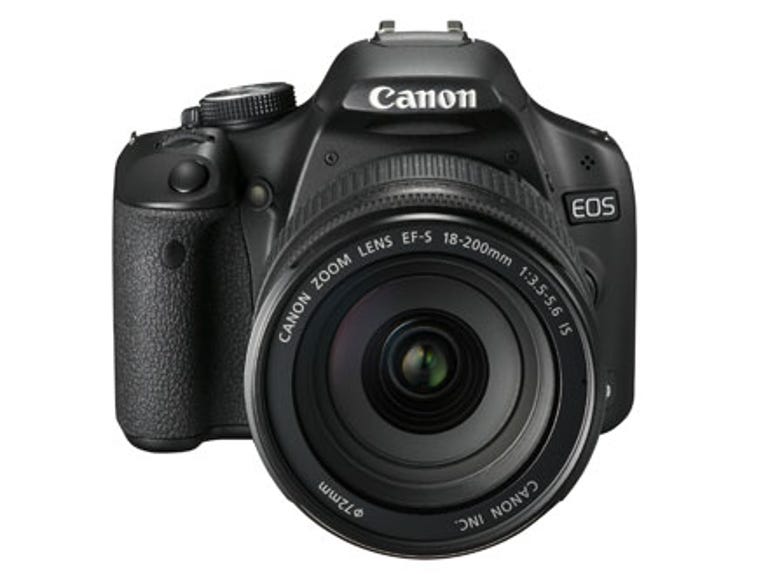 Why You Can Trust CNET
Why You Can Trust CNET Canon EOS 500D review: Canon EOS 500D
The 500D is a very capable camera that is ideal for someone entering the world of digital SLRs. The inclusion of high-definition video adds even more appeal to the already good-looking package.
When we first reported on the announcement of the 500D we were a little disappointed. Why so, when it's yet another dependable Canon SLR, you ask? Well, it was the lack of real upgrade-worthy features, apart from high-definition video.
The Good
The Bad
The Bottom Line
After having played with the camera extensively, we realise that our first judgement may have been a little hasty — it offers incremental, useful upgrades that will suit a photographer entering the dSLR fold. Its video capabilities and an increased megapixel count (a step-up to 15 megapixels from 12) are tempting for users looking to upgrade from a 400D or 450D.
Design
The 500D has that typical look-and-feel that is characteristic of all the Canon consumer dSLRs — there's the black plastic casing, along with smooth black buttons and a new 3-inch LCD screen. Normally we'd wax lyrical about the screen under the features section, but it really needs to be said here. Filled with 920,000 dots, the screen's brightness and resolution is just great for a camera of its class. It is a joy to use, and ideal for partnering with the movie mode and Live View.
Back to the physical attributes of the 500D, then. The chrome-tipped mode dial makes yet another appearance, housing the usual shooting modes, Creative Auto and movie mode. At the top, a hotshoe sits with the pop-up flash, an over-zealous little beast that loves to spring into action whenever you venture into automatic mode. In fact, it's so similar to the 450D from the outside, at least, that we'd have trouble telling the two apart were it not for Canon kindly raising the flash on the promotional shot for the 500D.

Apart from the flash being popped up on the 500D (right), there's no prizes for spot the difference from the 450D (left) here. (Credit: Canon)
The control wheel, which we saw on the 5D Mark II and 50D, is absent here, instead a four-way directional pad sits in its place. We find that for first-time dSLR users this is a tad more intuitive. It's also quite lightweight, at 480g without lens or battery, which makes it easy to carry around for impromptu shooting.
Features
Without a doubt the main drawcard on this camera is the high-definition video function, similar to what we saw on the 5D Mark II and also with one of the 500D's main competitors, the Nikon D5000.
On the 500D, the implementation is full 1080p — it's also worth noting that the D5000 is limited at 720p. To activate the recording, you move the dial to movie mode or Live View and then hit the record button. Auto focus is available before and during recording by pressing the * button, though do note that you will be able to hear all the lens movements in the audio recording — and trust us, they are loud.
We have to be thankful for the excellent implementation of Live View, as the viewfinder is not as ideal as we would have liked. It does give 95 per cent coverage of the field of view, but the nine focus points are quite difficult to see and using it just doesn't feel as comfortable as on other cameras in its class. The focus points also blink a little too briefly when it's locked onto a subject.
Like we saw on the Panasonic G1, the 500D features a rather over-zealous sensor that swaps between viewfinder and screen depending on where you position your eye. Canon's implementation is slightly better, though it can still be tricked by resting the camera too close to your body as you adjust settings.
Performance
Overall the 500D was nice and responsive in all shooting situations. With the kit lens (18-55mm), shooting in low-light situations was easy enough when using autofocus; though again, thanks to the difficult magnification of the viewfinder, manual focus became difficult to determine.
Using a standard SD card we managed to get 40 frames from the 500D before the camera produced a noticeable display whilst buffering and writing to the card. Canon quotes a shooting speed of 3.4 frames per second and a start-up of 0.1 second for the camera, and in practical use these figures hold up.
Image and movie quality
We tested the 500D with the 18-55mm and 55-250mm kit lenses that retail for AU$1999 as a package. For beginners, these lenses cover a wide range of focal lengths and we're sure that many people who pick up this camera won't feel the need to change beyond either of them.
In terms of image quality the 500D impressed us a lot. Though you won't achieve optimum levels of sharpness with the kit lenses, for most purposes they do the job. Canon's typical natural level of colour saturation is present throughout all the images, and exposures are generally accurate.
The highest native ISO on the camera is 3200, however, this can be expanded up to 12,800 in the additional settings. For the most part, a noise-free shot can be obtained at ISO 1600 thanks to the noise reduction built-in to the Digic 4 processor, but ideally for the sharpest shots you won't want to be hitting this level all the time. As you can see from the chart to the right, the 500D copes really well at higher ISO levels — compare the shot at ISO 100 and ISO 800, which are very similar at full magnification. The noise reduction does kick in though, and you can see evidence of smoothing and softening.
Videos taken with the 500D didn't have the same punch to them as the 5D Mark II's, which is partly to do with the size of the sensor, and partly to do with the lens attached to the body. In dark situations they were a little grainier than we would have liked to see, and a lot of shadow and black detail was lost. At 20fps they weren't particularly smooth, but for most users this won't be too much of a problem — we'll be waiting to see how the Panasonic Lumix GH1 copes with video at 24fps. Also, the 500D doesn't have an external microphone input like its big brother, the 5D Mark II, meaning the in-built mono microphone is all you get.
Conclusion
The 500D is a very capable camera that is ideal for someone who is just entering the world of digital SLRs. The inclusion of high-definition video adds even more appeal to the already good-looking package. It's a pretty crowded market segment, with the Nikon D5000 and the Olympus E-620 also in the "not quite entry level"' dSLR space, but the 500D is a pretty strong contender and on specs alone is very appealing.


